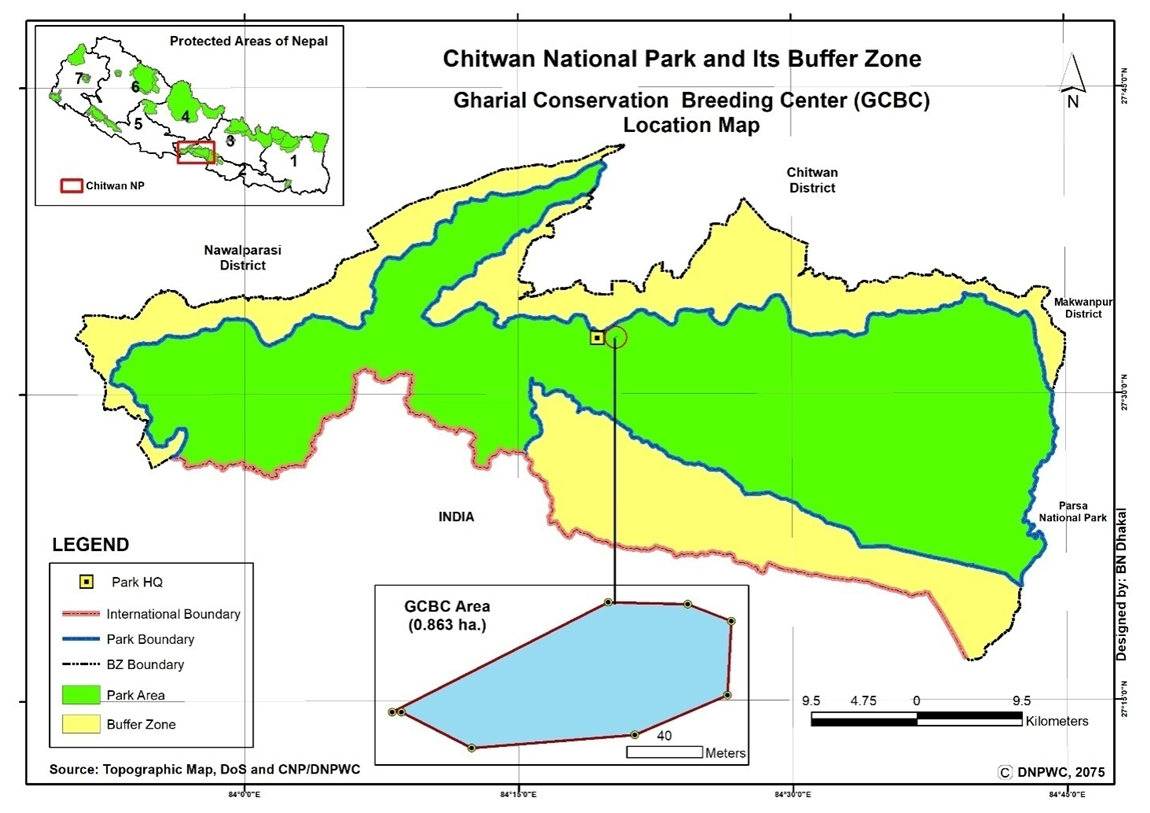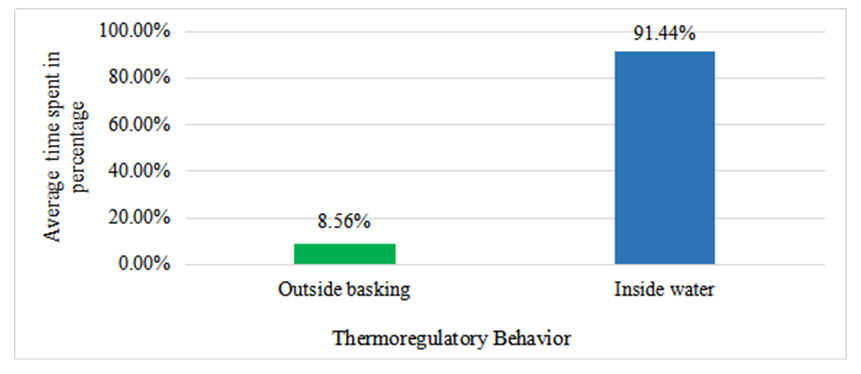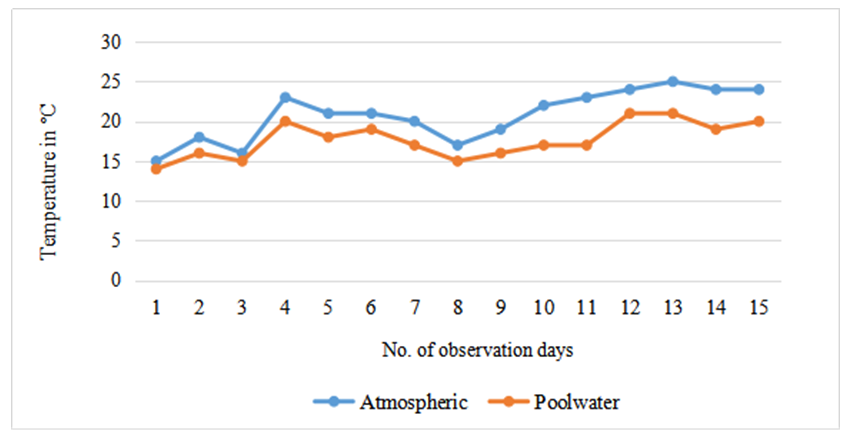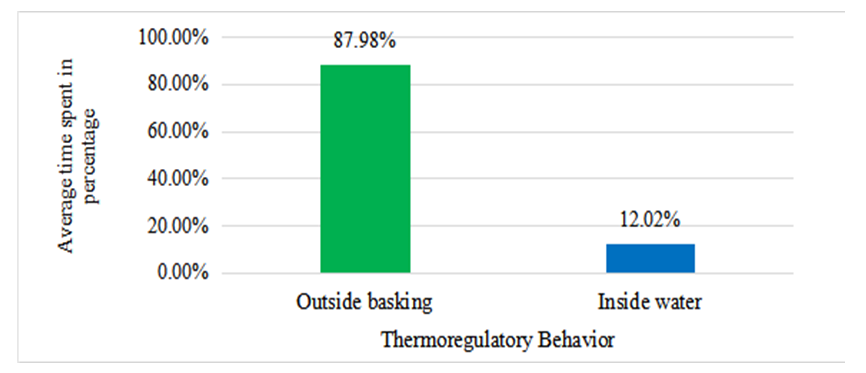-
Paper Information
- Next Paper
- Paper Submission
-
Journal Information
- About This Journal
- Editorial Board
- Current Issue
- Archive
- Author Guidelines
- Contact Us
Research in Zoology
p-ISSN: 2325-002X e-ISSN: 2325-0038
2019; 9(1): 1-6
doi:10.5923/j.zoology.20190901.01

Effect of Temperature Fluctuation on Thermoregulatory Behavior of Gharial in Winter Season (A Case Study of Gharial Conservation Breeding Centre, Chitwan National Park, Nepal)
Shilpa Adhikari1, 2, Dikshit Poudel1, Sandesh Bolakhe1
1Agriculture and Forestry University, Rampur, Chitwan, Nepal
2Gharial Conservation Breeding Centre, Chitwan National Park, Nepal
Correspondence to: Shilpa Adhikari, Agriculture and Forestry University, Rampur, Chitwan, Nepal.
| Email: |  |
Copyright © 2019 The Author(s). Published by Scientific & Academic Publishing.
This work is licensed under the Creative Commons Attribution International License (CC BY).
http://creativecommons.org/licenses/by/4.0/

Gharial (Gavialis gangeticus) is only surviving member of family Gavialidae which is native to Indian sub-continent. IUCN has listed Gharial as Critically Endangered and categorized in Appendix-I by CITES. In response to high population declination, Government of Nepal has started the restocking program from 1978. Environmental temperature has a pivotal role in the behavior of ectotherms. A pilot study was conducted from December 2017 to March 2018 to assess the impact of temperature variability on behavioral thermoregulation of gharial in the winter season at Gharial conservation Breeding Centre (GCBC), Chitwan National Park, Nepal. The paper attempts to analyze the effect of atmospheric and pool water temperature fluctuation on thermoregulatory behavior of gharial in the winter season which is an important consideration for conservation issue. Primary data was collected using focal animal sampling method and the temperature was recorded with a thermometer. The results of this study revealed, in morning gharials spent 91.44% time inside water when mean water temperature 14.93°C was greater than the atmospheric temperature of 12.80°C. Meanwhile, during day and evening, they spent 87.98% and 81.49% of their time basking outside as outer atmosphere was warmer with average 20.80°C and 20.14°C than pool water temperature 17.67°C and 17.60°C respectively to maintain their body temperature. In winter, basking was triggered when outer temperature surpassed pool water during day and evening hours but warmer pool water than the atmosphere in the morning resulted in gharials to stay inside pools for thermoregulation and ecological needs of their body. In extreme temperature, thermal stress may affect normal functions causing extensive damages. Thus, it is important to understand behavioral pattern and consider temperature fluctuation to prevent gharial from deadly extreme as well as for management and establishment of captive centers.
Keywords: Endangered, Gharial, Thermoregulation, Behavior, Temperature, Conservation
Cite this paper: Shilpa Adhikari, Dikshit Poudel, Sandesh Bolakhe, Effect of Temperature Fluctuation on Thermoregulatory Behavior of Gharial in Winter Season (A Case Study of Gharial Conservation Breeding Centre, Chitwan National Park, Nepal), Research in Zoology , Vol. 9 No. 1, 2019, pp. 1-6. doi: 10.5923/j.zoology.20190901.01.
Article Outline
1. Introduction
- Gharial (Gavialis gangeticus) also known as “fish eating Crocodile” is a freshwater crocodile and is endemic to the Indian subcontinent (Singh, 2015). This long-snouted crocodile is only surviving member of the family, Gavialidae out of all species of crocodilians (Rajbhandari and Acharya, 2015). Adult males have bulbous growth at the end of their snout called “Ghada” from which the species derives its name “Gharial” (Rajbhandari and Acharya, 2013). Due to the rapid population decline, International Union for Conservation of Nature has listed Gharial as Critically Endangered species (IUCN, 2009) and categorized in Appendix-I by Convention on International Trade in Endangered Species of Wild Fauna and Flora on 1975 (CITES, 2017). The Government of Nepal has also included Gharial in its list of protected wildlife by documenting it in National Park and Wildlife Conservation Act, 1973 (Pandit, 2007). The fragmented population of the endangered gharial crocodile is continuously under high threat by human disturbance, habitat destruction, hunting, pollution and exacerbated by overfishing (Stevenson and Whitaker, 2010). Captive breeding program and reintroduction is one of the most important conservation measures to prevent the total extinction of some endangered species (Manas, 2010). To ensure long term survival of gharial, the Government of Nepal initiated a conservation breeding program in Chitwan and Bardiya National Park since 1978 (Khadka, Kafley, & Thapaliya, 2008). The process of regulating an animal’s body temperature with regards to the ambient temperature is called thermoregulation (Jessen, 2001; Moyes & Schulte, 2008; Sanborn, 2005). Ectotherms rely on the environment for increasing or lowering body temperature, which means that there is a heavy behavioral component to their thermoregulation (Huey, 1982). Temperature has a significant impact on performance and fitness of organisms and they have developed numerous ways to either survive extreme core temperature changes or to regulate core temperature despite ambient fluctuations (Cowles & Bogert, 1944). Reptiles can only enjoy optimal health within a more narrow temperature range. If their climate becomes too cold for too long, their health will suffer as a result (Cornett, 2014).Crocodilians have a "preferred" body temperature of around 30-33°C, and to achieve such temperatures they move back and forth between warm and cool parts of their environment (IUCN Crocodile Specialist Group, 2019). Gharials spend a lot of time basking in the sun, more so in the winter than in the summer. Gharials also "gape" during basking to dissipate excess heat usually done in 10-20 minutes with the head at 20-degree angle (Gharial Conservation Alliance, 2018). In winter, gharials appear to spend most of their time basking, presumably to avoid the coldness of the water when water temperature is low. In contrast, in summer they spent most of their time inside water to avoid the heat of the day (Khadka & Thapaliya, 2010).This paper undertakes the study of the effect of atmospheric and pool water temperature fluctuation on thermoregulatory behavior of gharial in the winter season at Gharial Conservation Breeding Centre (GCBC), Chitwan National Park to provide pragmatic and baseline data for behavior study, conservation, and management.
2. Materials and Method
- Study location:The study was focused in Gharial Conservation Breeding Centre (GCBC) established in 1978 covering an area of 0.863 hectares at Kasara, Chitwan National Park, Nepal (Figure 1) to breed critically endangered gharial in captivity and revive their viable population in wild through reintroduction. The breeding centre facilitates about 650 gharials including hatchling, juvenile, young and adult in 32 different sized rearing and breeding pools. The average winter temperature in Chitwan ranges from 10 – 25 degree Celsius and reaches up to 40 degree Celsius in summer (DNPWC, 2004).
 | Figure 1. Showing map of the study area |
3. Results
- The result delineates that during winter season gharials spend most of their time where there is higher temperature either pool water or outer atmosphere as part of their behavioral thermoregulation to maintain their body temperature. It was observed that there is direct relationship between temperature and time spent in winter as higher the temperature-higher the amount of time spent and vice-versa. Figure 3, 5 and 7 clearly shows that basking was triggered when atmospheric temperature was higher.a) Morning
 | Figure 2. Fluctuation of atmospheric and pool water temperature in morning |
 | Figure 3. Showing percentage of average time spent in morning |
 | Figure 4. Fluctuation of atmospheric and pool water temperature during day |
 | Figure 5. Showing percentage of average time spent during day |
 | Figure 6. Fluctuation of atmospheric and pool water temperature during night |
 | Figure 7. Showing percentage of average time spent in evening |
4. Discussion
- In the present study, when the temperature of outer environment topped pool water temperature during day and evening time, gharials spent over four-fifths of time basking outside, and when the temperature of pool water was higher than the atmospheric temperature in the morning, gharials spent a little amount of time basking outside water. Similar case was seen in Shrestha (2000) that during the winter season when the air temperature typically was about 18°C (64 °F) and the water about 17°C (63 °F) basking occurred throughout the day, but during the summer season where the air temperature typically was about 35°C (95 °F) and the water about 25°C (77 °F), gharials basked less and avoid midday basking. This thermoregulatory behavior of gharial coincides to the behavior of Nile crocodile during the winter season (Downs, Greaver and Taylor, 2008) as most of the crocodiles were outside water basking from 10 am to 5 pm and returned to the water in the evening. In the previous study of physiological and behavioral thermoregulation of crocodiles by Smith (1979), basking occurred when air temperature exceeded water temperature, and drop in air temperature resulted in crocodiles to return to warm water.
5. Conclusions
- The variations in environmental and pool water temperature have had significant influences on the thermoregulatory behavior of gharial. On three separate occasions, basking of gharial occurred more during day and evening time when the atmospheric temperature topped water temperature as they spent average 87.98% and 80.49% respectively of their time basking in an outer warm atmosphere. Meanwhile, exceeded water temperature in the morning resulted in a retreat to warm water spending 91.44% inside water and only 8.56% basking outside to maintain their body temperature. In this research, the patterns of time spent by gharial inside and outside water during the winter season to maintain their ecological needs suggests that gharial showed behavioral thermoregulation pattern as higher the amount of time spent where there was higher temperature and vice versa. Hence, a notable effect of temperature fluctuation on behavioral thermoregulation of gharials was recorded in the present study.
Conflicts of Interest
- We the authors of this research article declare that this manuscript is original, has not been published before and is not currently being considered for publication elsewhere.We confirm that the manuscript has been read and approved by all named authors and that there are no other persons who satisfied the criteria for authorship but are not listed. We confirm that we have followed the regulations of our institutions concerning intellectual property. We further confirm that any aspect of the work covered in this manuscript has been conducted with the ethical approval of all relevant bodies and that such approvals are acknowledged within the manuscript. We confirm that we have provided a current, correct email address which is accessible by the Corresponding Author.-Authors
Funding Statement
- The research has been funded solely by Faculty of Forestry, Agriculture and Forestry University for the purpose of data collection and survey. This research has not received any funding for publication.
ACKNOWLEDGEMENTS
- We are indebted to Faculty of Forestry Agriculture and Forestry University, Hetauda, Makwanpur, Nepal. We feel immense gratitude to Bed Bahadur Khadka (chief, GCBC), Bishnu Prasad Thapaliya (DNPWC), all staffs at Gharial Conservation Breeding Centre and Chitwan National Park, Nepal who provided their valuable support. Furthermore, we are always thankful to our colleagues.
 Abstract
Abstract Reference
Reference Full-Text PDF
Full-Text PDF Full-text HTML
Full-text HTML